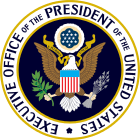White House Chief of Staff
The White House chief of staff position is the successor to the earlier role of the President's private secretary. The role was formalized as the assistant to the president in 1946 and acquired its current title in 1961. The current official title is Assistant to the President and Chief of Staff.
| Assistant to the President and Chief of Staff | |
|---|---|
 | |
| Executive Office of the President White House Office | |
| Reports to | President of the United States |
| Appointer | President of the United States |
| Formation | 1946 (Assistant to the President) 1961 (White House Chief of Staff) |
| First holder | John R. Steelman |
| Website | www |
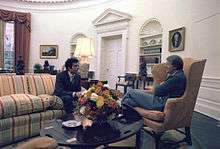
The chief of staff is a political appointee of the president who does not require Senate confirmation, and who serves at the pleasure of the president. While not a legally required role, all presidents since Harry Truman have appointed chiefs of staff, with the exception of Presidents Kennedy and Lyndon Johnson, whose appointments were to the office of White House Appointments Secretary, a role subsumed into that of Chief of Staff.
In the administration of Donald Trump, the current chief of staff is Mark Meadows, who succeeded Mick Mulvaney on March 31, 2020.[1]
History
The duties of the White House chief of staff vary greatly from one administration to another and, in fact, there is no legal requirement that the president even fill the position. However, since at least 1979, all presidents have found the need for a chief of staff, who typically oversees the actions of the White House staff, manages the president's schedule, and decides who is allowed to meet with the president. Because of these duties, the chief of staff has at various times been labeled "The Gatekeeper."
Originally, the duties now performed by the chief of staff belonged to the president's private secretary and were fulfilled by crucial confidants and advisers such as George B. Cortelyou, Joseph Tumulty, and Louis McHenry Howe to presidents Theodore Roosevelt, Woodrow Wilson, and Franklin Roosevelt, respectively.[2] The private secretary served as the president's de facto chief aide in a role that combined personal and professional assignments of highly delicate and demanding natures, requiring great skill and discretion.[3] The job of gatekeeper and overseeing the president's schedule was separately delegated to the appointments secretary, as with FDR's aide Edwin "Pa" Watson.
From 1933 to 1939, as he greatly expanded the scope of the federal government's policies and powers in response to the Great Depression, Roosevelt relied on his "Brain Trust" of top advisers. Although working directly for the president, they were often appointed to vacant positions in agencies and departments, whence they drew their salaries since the White House lacked statutory or budgetary authority to create new staff positions. It was not until 1939, during Franklin D. Roosevelt's second term in office, that the foundations of the modern White House staff were created using a formal structure. Roosevelt was able to get Congress to approve the creation of the Executive Office of the President, which would report directly to the president. During World War II, Roosevelt created the position of "Chief of Staff to the Commander in Chief" for his principal military adviser, Fleet Admiral William D. Leahy.
In 1946, in response to the rapid growth of the U.S. government's executive branch, the position of "Assistant to the President of the United States" was established. Charged with the affairs of the White House, it was the immediate predecessor to the modern chief of staff. It was in 1953, under Republican President Dwight D. Eisenhower, that the president's preeminent assistant was designated the "White House Chief of Staff".
Assistant to the president became a rank generally shared by the chief of staff with such senior aides as deputy chiefs of staff, the White House counsel, the White House press secretary, and others. This new system did not catch on immediately. Democrats Kennedy and Johnson still relied on their appointments secretaries instead, and it was not until the Nixon administration that the chief of staff took over maintenance of the President's schedule. This concentration of power in the Nixon and Ford White House (whose last chief of staff was Dick Cheney) led presidential candidate Jimmy Carter to campaign in 1976 with the promise that he would not appoint a chief of staff. And indeed, for the first two and a half years of his presidency, he appointed no one to the post.[4][5]
The average tenure for a White House chief of staff is a little more than 18 months.[6] The inaugural chief of staff, John R. Steelman, under Harry S. Truman, was also the last to be a president's only chief of staff, not counting Kenneth O'Donnell during John F. Kennedy's 34 months in office. (Andrew Card and Denis McDonough each served at least one entire presidential term of office under presidents George W. Bush and Barack Obama, respectively.) Steelman also holds the record for longest-serving chief of staff (six years).
Most White House chiefs of staff are former politicians, and many continue their political careers in other senior roles. Lyndon Johnson's chief of staff W. Marvin Watson became the Postmaster General later in LBJ's term. Richard Nixon's chief of staff Alexander Haig, a career U.S. Army officer with his capstone military position being CINCUSEUCOM/SACEUR, later became Secretary of State under Ronald Reagan. Cheney later became a congressman for Wyoming, Secretary of Defense under George H. W. Bush and vice president in the George W. Bush administration. Donald Rumsfeld was another chief of staff for Ford and subsequently served as secretary of defense both in the Ford administration and decades later, also in the George W. Bush administration. Rahm Emanuel left the House of Representatives to become Barack Obama's chief of staff and subsequently became mayor of Chicago. Jack Lew, President Obama's fourth chief of staff, was later appointed secretary of the treasury.
Role


Chris Whipple, author of The Gatekeepers: How the White House Chiefs of Staff Define Every Presidency, loosely describes the role of a White House chief of staff through his interview with former president Barack Obama: "During the last days of his presidency, Barack Obama observed: 'One of the things I've learned is that the big breakthroughs are typically the result of a lot of grunt work—just a whole lot of blocking and tackling.' Grunt work is what chiefs of staff do."[6]
The responsibilities of the chief of staff are both managerial and advisory and can include the following:
- Select key White House staff and supervise them;
- Structure the White House staff system;
- Control the flow of people into the Oval Office;
- Manage the flow of information;
- Protect the interests of the president;
- Negotiate with Congress, other members of the executive branch, and extra-governmental political groups to implement the president's agenda; and
- Advise the president on various issues, including telling the president what they do not want to hear.[6]
These responsibilities extend to firing of staff members: in the case of Omarosa Manigault Newman, who published a tape she said was made in the Situation Room of her firing by Chief of Staff John Kelly, the chief of staff said that his decision for her departure was non-negotiable and that "the staff and everyone on the staff works for me and not the president."[7]
Richard Nixon's first chief of staff, H. R. Haldeman, garnered a reputation in Washington for the iron hand he wielded in the position—famously referring to himself as "the president's son-of-a-bitch", he was a rigid gatekeeper who would frequently meet with administration officials in place of the president, then report himself to Nixon on the officials' talking points. Journalist Bob Woodward, in his books All the President's Men and The Secret Man, wrote that many of his sources, including the famous Deep Throat, displayed a genuine fear of Haldeman.[8][9]
List of White House chiefs of staff
| No. | Chief of Staff | Took office | Left office | Time in office | Party | President | |
|---|---|---|---|---|---|---|---|
| 1 | John Steelman (1900–1999) | December 12, 1946 | January 20, 1953 | 6 years, 39 days | Democratic | Harry S Truman (Dem) (1945 – 1953) | |
| 2 | Sherman Adams (1899–1986) | January 20, 1953 | October 7, 1958 | 5 years, 260 days | Republican | Dwight D. Eisenhower (Rep) (1953 – 1961) | |
| 3 | Wilton Persons (1896–1977) | October 7, 1958 | January 20, 1961 | 2 years, 105 days | Republican | Dwight D. Eisenhower (Rep) (1953 – 1961) | |
| - | Kenneth O'Donnell (1924–1977) [lower-alpha 1] | January 20, 1961 | November 22, 1963 | 2 years, 306 days | Democratic | John F. Kennedy (Dem) (1961 – 1963) | |
| - | Marvin Watson (1924–2017) [lower-alpha 1] | February 1, 1965 | April 26, 1968 | 3 years, 85 days | Democratic | Lyndon B. Johnson (Dem) (1963 – 1969) | |
| - | James R. Jones (born 1939) [lower-alpha 1] | April 26, 1968 | January 20, 1969 | 269 days | Democratic | Lyndon B. Johnson (Dem) (1963 – 1969) | |
| 4 | H. R. Haldeman (1926–1993) | January 20, 1969 | April 30, 1973 | 4 years, 100 days | Republican | Richard Nixon (Rep) (1969 – 1974) | |
| Vacant April 30, 1973 – May 4, 1973 (4 days) | |||||||
| 5 | Alexander Haig (1924–2010) | May 4, 1973 | September 21, 1974 | 1 year, 140 days | Republican | Richard Nixon (Rep) (1969 – 1974) Gerald Ford (Rep) (1974 – 1977) | |
| 6 | Donald Rumsfeld (born 1932) | September 21, 1974 | November 20, 1975 | 1 year, 60 days | Republican | Gerald Ford (Rep) (1974 – 1977) | |
| 7 | Dick Cheney (born 1941) | November 20, 1975 | January 20, 1977 | 1 year, 61 days | Republican | Gerald Ford (Rep) (1974 – 1977) | |
| Vacant January 20, 1977 – July 18, 1979 (2 years, 179 days) | |||||||
| 8 | Hamilton Jordan (1944–2008) | July 18, 1979 | June 11, 1980 | 329 days | Democratic | Jimmy Carter (Dem) (1977 – 1981) | |
| 9 | Jack Watson (born 1938) | June 11, 1980 | January 20, 1981 | 223 days | Democratic | Jimmy Carter (Dem) (1977 – 1981) | |
| 10 | James Baker (born 1930) | January 20, 1981 | February 4, 1985 | 4 years, 15 days | Republican | Ronald Reagan (Rep) (1981 – 1989) | |
| 11 | Donald Regan (1918–2003) | February 4, 1985 | February 27, 1987 | 2 years, 23 days | Republican | Ronald Reagan (Rep) (1981 – 1989) | |
| 12 | Howard Baker (1925–2014) | February 27, 1987 | July 1, 1988 | 1 year, 125 days | Republican | Ronald Reagan (Rep) (1981 – 1989) | |
| 13 | Kenneth Duberstein (born 1944) | July 1, 1988 | January 20, 1989 | 203 days | Republican | Ronald Reagan (Rep) (1981 – 1989) | |
| 14 | John Sununu (born 1939) | January 20, 1989 | December 16, 1991 | 2 years, 330 days | Republican | George H. W. Bush (Rep) (1989 – 1993) | |
| 15 | Samuel Skinner (born 1938) | December 16, 1991 | August 23, 1992 | 251 days | Republican | George H. W. Bush (Rep) (1989 – 1993) | |
| 16 | James Baker (born 1930) | August 23, 1992 | January 20, 1993 | 150 days | Republican | George H. W. Bush (Rep) (1989 – 1993) | |
| 17 | Mack McLarty (born 1946) | January 20, 1993 | July 17, 1994 | 1 year, 178 days | Democratic | Bill Clinton (Dem) (1993 – 2001) | |
| 18 | Leon Panetta (born 1938) | July 17, 1994 | January 20, 1997 | 2 years, 187 days | Democratic | Bill Clinton (Dem) (1993 – 2001) | |
| 19 | Erskine Bowles (born 1945) | January 20, 1997 | October 20, 1998 | 1 year, 273 days | Democratic | Bill Clinton (Dem) (1993 – 2001) | |
| 20 | John Podesta (born 1949) | October 20, 1998 | January 20, 2001 | 2 years, 92 days | Democratic | Bill Clinton (Dem) (1993 – 2001) | |
| 21 | Andrew Card (born 1947) | January 20, 2001 | April 14, 2006 | 5 years, 84 days | Republican | George W. Bush (Rep) (2001 – 2009) | |
| 22 | Joshua Bolten (born 1954) | April 14, 2006 | January 20, 2009 | 2 years, 281 days | Republican | George W. Bush (Rep) (2001 – 2009) | |
| 23 | Rahm Emanuel (born 1959) | January 20, 2009 | October 1, 2010 | 1 year, 254 days | Democratic | Barack Obama (Dem) (2009 – 2017) | |
| - | Pete Rouse (born 1946) Acting [lower-alpha 2] | October 1, 2010 | January 13, 2011 | 104 days | Democratic | Barack Obama (Dem) (2009 – 2017) | |
| 24 | Bill Daley (born 1948) | January 13, 2011 | January 27, 2012 | 1 year, 14 days | Democratic | Barack Obama (Dem) (2009 – 2017) | |
| 25 | Jack Lew (born 1955) | January 27, 2012 | January 20, 2013 | 359 days | Democratic | Barack Obama (Dem) (2009 – 2017) | |
| 26 | Denis McDonough (born 1969) | January 20, 2013 | January 20, 2017 | 4 years, 0 days | Democratic | Barack Obama (Dem) (2009 – 2017) | |
| 27 | Reince Priebus (born 1972) | January 20, 2017 | July 31, 2017 | 192 days | Republican | Donald Trump (Rep) (since 2017) | |
| 28 | John F. Kelly (born 1950) | July 31, 2017 | January 2, 2019 | 1 year, 154 days | Independent | Donald Trump (Rep) (since 2017) | |
| - | Mick Mulvaney (born 1967) Acting [lower-alpha 3] | January 2, 2019 | March 31, 2020 | 1 year, 89 days | Republican | Donald Trump (Rep) (since 2017) | |
| 29 | Mark Meadows (born 1959) [lower-alpha 4] | March 31, 2020 | Incumbent | 139 days | Republican | Donald Trump (Rep) (since 2017) | |
See also
Notes
- De facto, as Appointments Secretary.
- Pete Rouse served as ad interim White House Chief of Staff following the resignation of Rahm Emanuel and until the appointment of Bill Daley.
- Mick Mulvaney served as "Acting White House Chief of Staff" following the resignation of John Kelly.
- Mark Meadows serves as "White House Chief of Staff" following the resignation of Mick Mulvaney.
References
- "Meadows resigns House seat, starts at White House on Tuesday". abcnews. March 30, 2020.
- "New Quarters". Time. 1934-12-17. Retrieved 2008-05-08.
- "An Appointment". Time. 1923-08-20. Retrieved 2009-05-09.
- "Hamilton Jordan, Carter's Right Hand, Dies at 63". The New York Times. 21 May 2008. Retrieved 7 March 2016.
- "The Presidency and the Political System". Retrieved 7 March 2016.
- Whipple, Chris. (2017). The Gatekeepers: How the White House Chiefs of Staff Define Every Presidency. New York: Crown Publishing Group.
- "Transcript". CNN. August 13, 2018.
- Woodward, Bob; Bernstein, Carl. (1974) All the President's Men. New York: Simon & Schuster. ISBN 978-0-671-21781-5
- Woodward, Bob. (2005). The Secret Man. New York: Simon & Schuster. ISBN 0-7432-8715-0

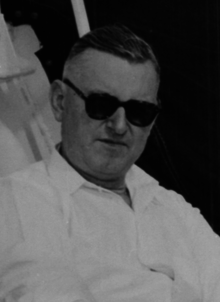
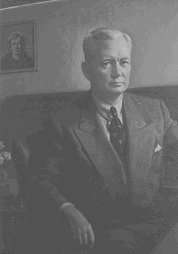


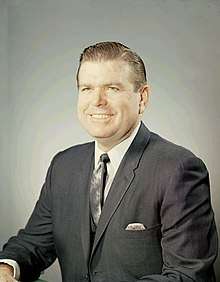


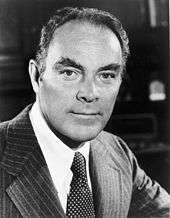
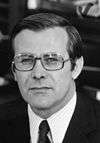
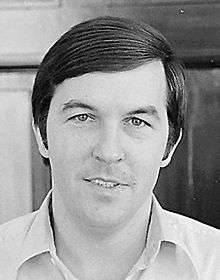
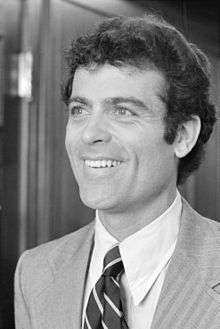
.jpg)



.jpg)



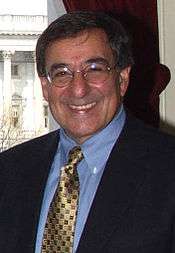

.jpg)

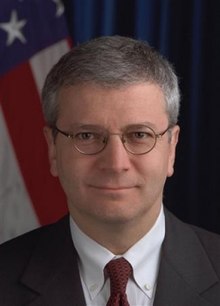
.jpg)
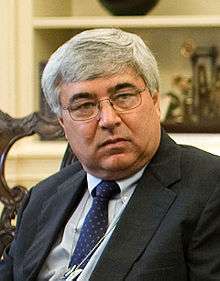
.jpg)
.jpg)
.jpg)

.jpg)
.jpg)
